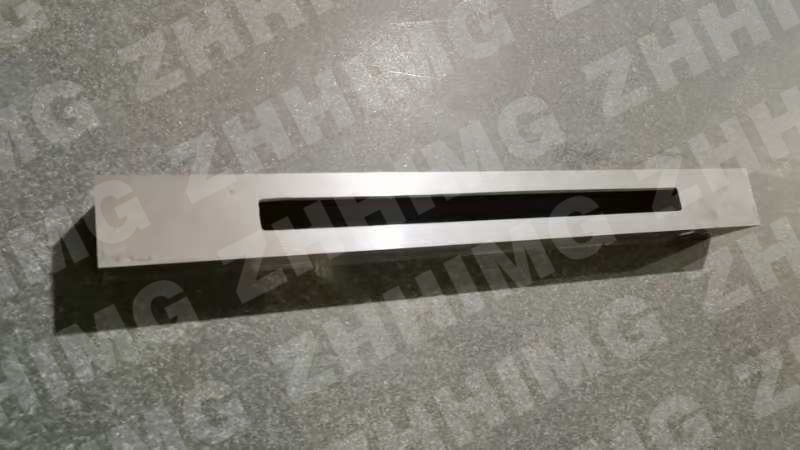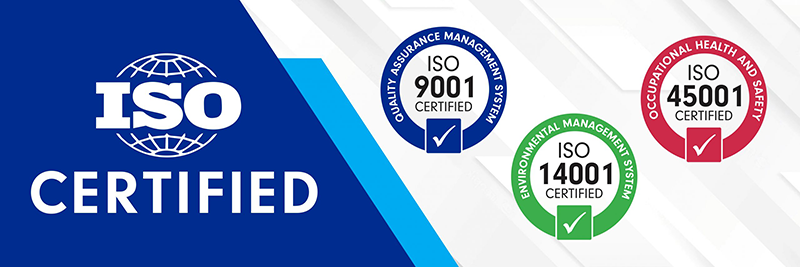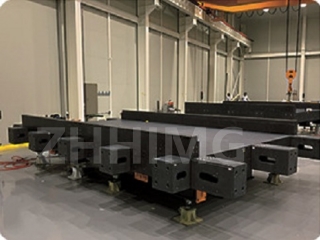In the field of precision manufacturing and advanced scientific research, the base selection of precision static pressure air floating platform is the key factor to determine its performance. Granite precision base and ceramic base have their own characteristics, showing different advantages and characteristics in stability, accuracy maintenance, durability and so on.

Stability: Natural structure versus synthetic
After a long geological transition, granite is closely interwoven by quartz, feldspar and other minerals, forming a dense and uniform structure. In the face of external vibration interference, such as the strong vibration generated by the operation of large-scale equipment in the factory workshop, the granite base can effectively block and attenuate, which can reduce the vibration amplitude of the precision static pressure air floating platform by more than 80%, providing a stable operating basis for the platform to ensure smooth movement in high-precision processing or detection. For example, in the lithography process of semiconductor chip manufacturing, a stable granite base can ensure the accurate operation of chip lithography equipment and achieve high-precision characterization of chip patterns.
The ceramic base is made by artificial synthesis and advanced technology, and its internal structure is also uniform and has good vibration damping characteristics. When dealing with general vibration, it can create a stable working environment for precision static pressure air floating platform. However, in the face of high strength and sustained vibration, its vibration attenuation ability is slightly inferior to that of granite base, and it is difficult to reduce the vibration interference to the same low level, which may have a certain impact on the ultra-precision movement of the platform.
Accuracy retention: low expansion of natural advantages and artificial control of precision
Granite is known for its very low coefficient of thermal expansion, usually at 5-7 ×10⁻⁶/℃. In the temperature fluctuation environment, the size of the granite precision base changes very little. In the field of astronomy, the precision static pressure air float platform for the fine tuning of the telescope lens is paired with the granite base, even if the temperature difference between day and night is significant, it can ensure that the positioning accuracy of the lens is maintained at the submicron level, helping astronomers to capture the subtle dynamics of distant celestial bodies.
Ceramic materials are excellent in terms of thermal stability, and the coefficient of thermal expansion of some high-performance ceramics can be as low as nearly zero and can be precisely regulated through formulation and process. In some temperature-sensitive high-precision measuring equipment, the ceramic base can maintain a stable size when the temperature changes, ensuring the precision of the movement of the precision static pressure air floating platform. However, its long-term accuracy stability in practical applications is affected by factors such as material aging and needs to be further verified.
Durability: High hardness natural stone and corrosion resistant synthetic materials
Granite hardness is high, Mohs hardness can reach 6-7, good wear resistance. In the materials science laboratory, the frequently used precision static pressure air float platform, its granite base can effectively resist long-term friction loss, compared with the ordinary base, can extend the maintenance cycle of the platform by more than 50%, reduce equipment maintenance costs, and ensure the continuity of scientific research work. However, granite material is relatively brittle, there is a risk of rupture when accidentally impacted.
The ceramic base is not only hard, but also has excellent corrosion resistance. In industrial environments where there is a risk of chemical corrosion, such as precision hydrostatic air flotation platforms in chemical product inspection equipment, ceramic bases resist corrosive gases or liquids, maintaining surface integrity and mechanical properties for a long time. In extreme environment such as high humidity, the performance stability of ceramic base is better than that of granite base.
Manufacturing cost and processing difficulty: the mining challenge of natural stone and the technical threshold of artificial synthesis
The mining and transportation of granite raw materials are complex, and the processing requires very high equipment and technology. Because of its high hardness, brittleness, cutting, grinding, polishing and other processes are prone to collapse, cracks, high scrap rate, resulting in high manufacturing costs.
Ceramic base manufacturing relies on advanced synthesis and precision machining technology, from raw material preparation, molding to sintering, every step needs to be precisely controlled. Early research and development and equipment investment is huge, high technical threshold. However, with the expansion of production scale, the cost is expected to be reduced, and it has cost-effective potential in high-end applications.

Overall, granite precision bases perform well in overall stability and conventional durability, while ceramic bases have unique advantages in extreme temperature adaptability and corrosion durability. The choice of the base should be based on the specific application scenario, environmental conditions and cost budget of the precision static pressure air float platform.
Post time: Apr-10-2025

